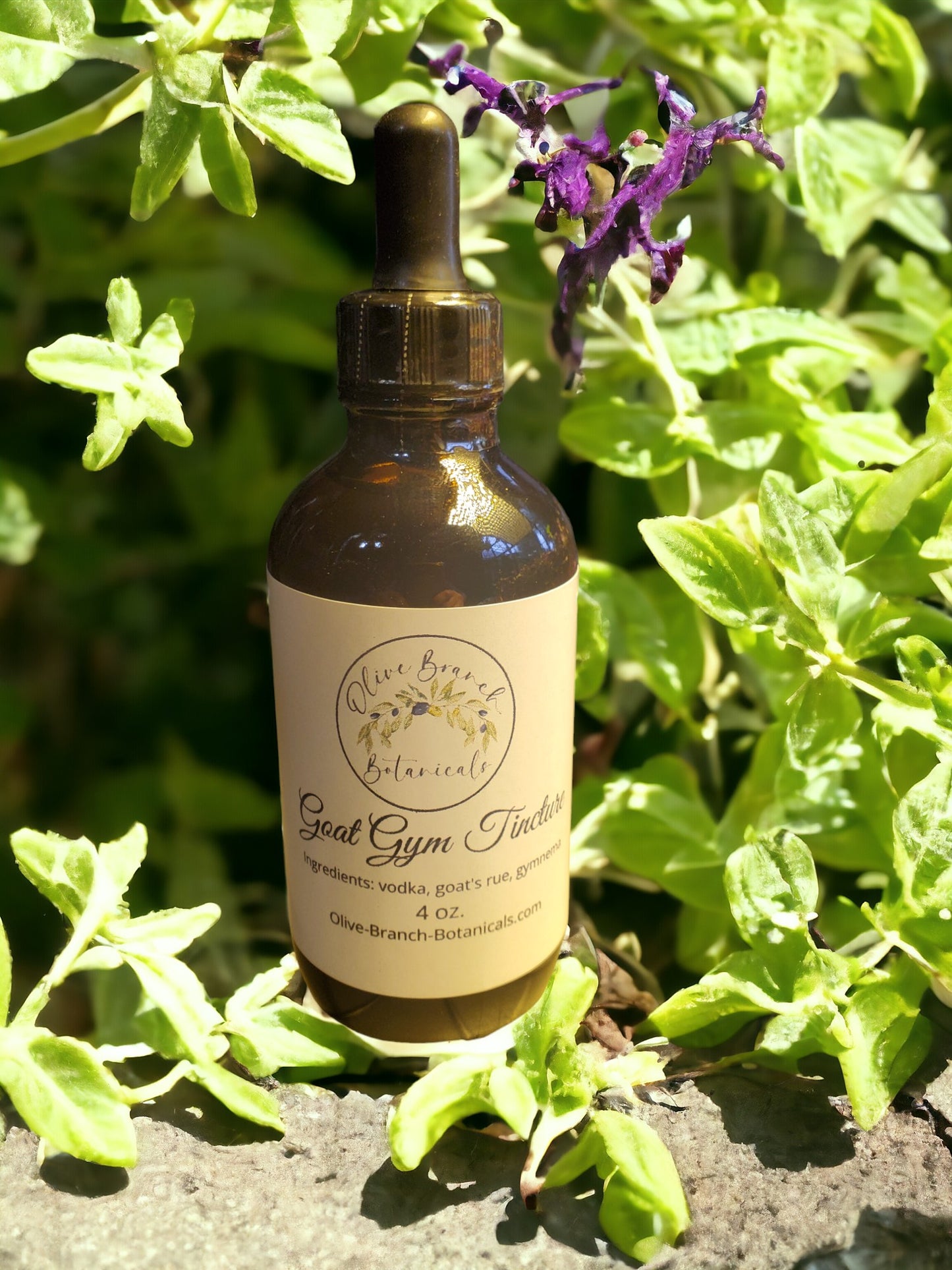Olive Branch Botanicals
Goat Gym
Goat Gym
Couldn't load pickup availability
Synergistic Health Benefits of Goat's Rue and Gymnema for Diabetes Management
Metformin, a widely prescribed medication for diabetes, was originally derived from Goat's Rue. Goat's Rue contains compounds such as guanidine and galegine, which have shown promise in regulating blood sugar levels by stimulating insulin secretion from the pancreas and enhancing insulin sensitivity in cells. Additionally, it may inhibit glucose absorption in the intestines, contributing to blood sugar management.
Similarly, Gymnema, rich in gymnemic acids, offers mechanisms for blood sugar regulation by reducing sweet cravings, promoting insulin secretion, and supporting the regeneration of pancreatic beta cells.
Comparing these herbal remedies to pharmaceuticals like Metformin, it's evident that while Metformin targets glucose production and insulin sensitivity, it may entail undesirable side effects. In contrast, Goat's Rue and Gymnema offer gentler approaches, aligning with the body's natural processes and its innate wisdom and vitality.
Origins of Metformin
Metformin, a widely used medication for the treatment of non-insulin-dependent diabetes mellitus (type 2 diabetes), has a history that dates back several decades. The chemical origins of metformin can be traced back to the synthesis of guanidine by Adolph Strecker in the 1840s and the subsequent work of Bernhard Rathke in 1879, which led to the fusion of two guanidines to form biguanide. This laid the foundation for the synthesis of metformin (dimethylbiguanide) by Werner and Bell in 1922.
The medicinal herb Galega officinalis, also known as French lilac or goat's rue, played a significant role in the discovery of metformin. In the early 20th century, scientists discovered that one of the ingredients in Galega officinalis, guanidine, had the ability to lower blood sugar levels. This finding sparked interest in exploring the potential therapeutic benefits of guanidine derivatives, including metformin.
Metformin was initially one of several biguanides being tested for its blood glucose-lowering effects. However, due to the availability of insulin as a treatment for diabetes, interest in these compounds waned until metformin was rediscovered in the 1940s for a different purpose
. Since then, metformin has become the most prescribed sugar-lowering medication worldwide and has shown potential benefits beyond diabetes treatment, including cardiovascular benefits and potential anti-aging effects.
In summary, the origins of metformin can be traced back to the synthesis of guanidine derivatives and the discovery of guanidine's ability to lower blood glucose levels in Galega officinalis. These findings eventually led to the synthesis of metformin and its subsequent use as a medication for the treatment of type 2 diabetes.
**Disclaimer**
These statements have not been evaluated by the Food and Drug Administration. This product is not intended to diagnose, treat, cure, or prevent any disease. Similarly, statements regarding dietary supplements have not been evaluated by the FDA and are not intended to diagnose, treat, cure, or prevent any disease or health condition.
Before starting any new treatment, especially those involving herbal extracts, individuals should consult with their healthcare providers to ensure compatibility with existing conditions or medications. This information serves to educate and inform, not to replace medical advice. While many herbs are generally safe, potential medical interactions exist.
Share


